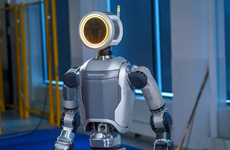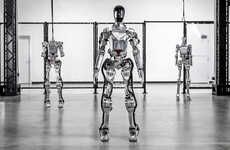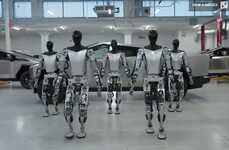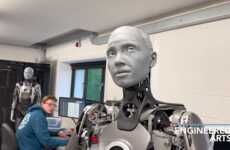
The Toyota T-HR3 Robot Matches the Movements of Its Operator
Laura McQuarrie — November 25, 2017 — Tech
References: japantrends
The Toyota T-HR3 is an impressive new humanoid robot that boasts the ability to mimic the movements made by its human operator.
The T-HR3 is the third-generation in a series that has been in development by Toyota for several years, but this new robot boasts 32 axes, 10 movable fingers and a Master Maneuvering System for the controller. Most impressively, the bot is instantly responsive and moves with joints that seem to function as smoothly and naturally as the ones found in the human body.
Although the design of the T-HR3 is still in the prototype stage, the robot has the potential to be used for a wide range of applications such as disaster relief and construction where work is challenging or potentially dangerous for humans.
The T-HR3 is the third-generation in a series that has been in development by Toyota for several years, but this new robot boasts 32 axes, 10 movable fingers and a Master Maneuvering System for the controller. Most impressively, the bot is instantly responsive and moves with joints that seem to function as smoothly and naturally as the ones found in the human body.
Although the design of the T-HR3 is still in the prototype stage, the robot has the potential to be used for a wide range of applications such as disaster relief and construction where work is challenging or potentially dangerous for humans.
Trend Themes
1. Humanoid Robotics - Developing humanoid robots that mimic human movements opens up possibilities for various industries.
2. Responsive Robotics - Creating robots that can instantly respond and move smoothly like humans presents disruptive innovation opportunities.
3. Robot-assisted Applications - Exploring the use of humanoid robots in industries such as disaster relief and construction can revolutionize the way work is done.
Industry Implications
1. Manufacturing - Integrating responsive humanoid robots in manufacturing processes can enhance efficiency and productivity.
2. Healthcare - Utilizing robot-assisted applications in healthcare can improve patient care and assist in complex medical procedures.
3. Construction - Implementing humanoid robots in construction sites can increase safety, speed up tasks, and handle heavy lifting.
1.9
Score
Popularity
Activity
Freshness















